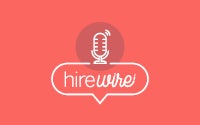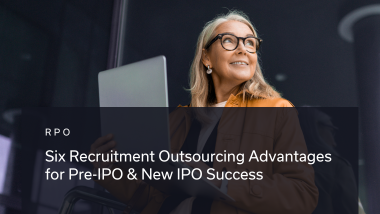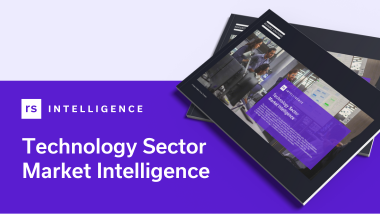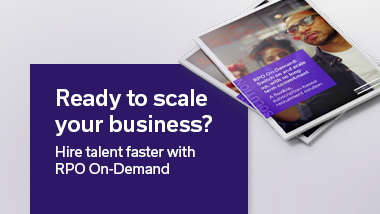Have you accepted your sourcing reality? 3 Questions TA leaders need to ask themselves
During the 2020 COVID-19 pandemic, many organizations were forced to go remote. While some businesses kept this model post-pandemic, even more have reverted to in-office work requirements or taken a hybrid approach that combines remote and in-office. Remote work is unpopular among the C-suite, but data from a recent Gallup poll shows that 65% of the US workforce wants to work remotely.
So, how do you reconcile leadership’s desire for in-office workers with many job seekers’ demand for a remote or hybrid work schedule? Jeff Sunderland, Head of Sourcing for North America at Resource Solutions, offered insights on the HRO Today podcast.
Focus on how to source talent first
When discussing remote work, the C-suite and talent acquisition (TA) leadership teams have focused on the logistics of managing a remote team—but the questions they should be asking first center around how to source and hire remote talent.
In an increasingly competitive job market and even higher demand for remote roles, you need to consider how you can source top talent when you don’t offer fully remote options. How do you compete with organizations that can give workers what they truly want?
Understand how to source from each candidate group
Three distinct candidate groups have emerged as a result of the changing ways of work during the pandemic. Each group has specific requirements and will quickly roll your company out if you’re not providing a remote or hybrid option.
While it’s a harsh reality, talent acquisition leaders must accept that they’ll be recruiting from a smaller talent pool. But they can also sell their organizations, values, and employer value propositions (EVP) to try and win candidates. Above all, you need to tailor your sourcing strategy per candidate group.
The remote-only candidate
Remote-only candidates are those looking for remote jobs and will quickly move on from your organization if they see that the roles aren’t fully remote. They’re likely to scroll past your LinkedIn postings or ads if they don’t see “Remote” as the location. They simply aren’t interested in working with companies that require hybrid or full in-office schedules.
The in-office candidate
While a majority of candidates prefer a remote or hybrid work environment, there are still quite a few who want to be in the office. They want the buzz of an office environment, the social aspects, and the unique collaboration that comes with being able to walk up to someone and have a quick conversation or brainstorming session. They don’t want remote-only roles.
The open and flexible candidate
Open and flexible candidates can work remotely, in the office, or in a hybrid setup. They’re more open than the other two groups, but for them to consider an organization or a job, they need specific details. They want details about the organization, the position, the culture, and more. A generic EVP, job description, or basic interview won’t do.
Recognize your limitations
With two of the three candidate groups immediately shutting down an organization that can’t or won’t provide the environment they want, talent acquisition teams need to recognize that they will be working from a reduced talent pool.
If you can’t give candidates the remote and hybrid work environments they crave, you need to accept that you won’t have as large a talent pool to choose from as other organizations. Are you prepared to handle sourcing from a reduced candidate pool? Is your executive leadership team prepared and do they understand the implications?
How to approach sourcing with various candidate groups
A one-size-fits-all approach across the three distinct candidate groups won’t work. Your TA leaders need to ask themselves a few questions to understand how to communicate with each distinct candidate group.
Are we educating business leaders?
The C-suite may have decided that their workforce needs to come into the office, but have you or your RPO provider educated them on the impact? Whether the organization is fully remote, in-office, or hybrid, leadership needs to understand and accept the implications on sourcing (and the reduced pool of talent to choose from).
Are you continuously educating leadership and hiring managers on the impact of the market trends impacting your talent pool? TA leadership should also use data (market intelligence) to set realistic expectations with hiring managers and business leaders about the viability of filling roles.
Does our team know how to capture a candidate's attention?
Is your team armed with the right talking points to get candidates' attention? While standard EVP, high-level organizational stories, and a benefits review have worked in the past, they're no longer enough.
To attract open and flexible candidates, Recruiters should be able to sell specific points about your organization, articulate any exciting or fun projects the candidate would be working on, and discuss diversity, equity, and inclusion (DEI) commitments. Remember, they want specifics, so arm your team with details around:
- The opportunity
- The environment
- The why (why work for your company)
- What's in it for them
Do your hiring managers know their role?
Your hiring managers and diverse interview panel participants likely know they're here to vet candidates. But have you let them know they are also there to reinforce your company as a top place to work? They should emphasize why candidates would want to work there. It's about selling your company.
So, ask yourself: Are hiring managers selling us? Do they know they're supposed to do more than just vet the candidates?
Leverage data and market intelligence
It's one thing to know what to do, but another thing entirely to have the data and intelligence to make it happen. Jeff discussed RS Intelligence - a market intelligence platform that offers data and insights—as a way for recruiting teams to leverage data to make informed decisions.
Market intelligence is a vital part of any successful sourcing strategy. RS Intelligence helps clients make more strategic decisions on their sourcing strategies by:
- Helping you rethink or refine location strategy based on data
- Providing intel on the viability of filling roles in different locations
- Showing you if your organization's pay banding allows you to source top talent
- Set expectations with leadership on what your budgets can achieve (based on market data)
Every business wants top talent, but by using market intelligence platforms, you can provide informed insights into what's possible based on your budget, what work setup you provide, where you source from, and more. It allows recruiters to talk with hiring managers and leadership about what's realistic and what needs to change if they want top talent.
RSIntelligence and you
As work continues to evolve and demands for sourcing top talent increase, the need for data-led decision-making will only grow. Market intelligence platforms like RSIntelligence can help. Resource Solutions' on-demand, cloud-based talent intelligence solution empowers leaders to make data-informed decisions that deliver impact.
Ready to get started? Contact Resource Solutions today.













